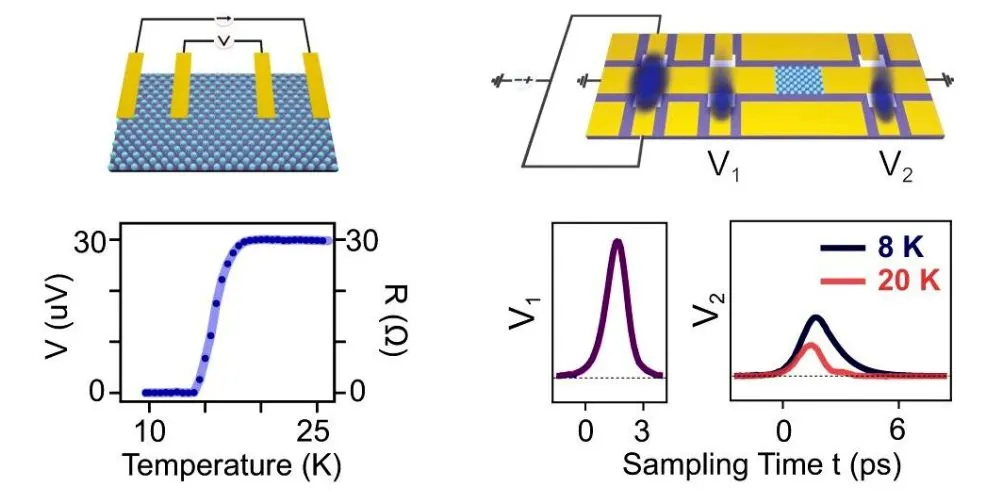Researchers at the Max Planck Institute for the Structure and Dynamics of Matter (MPSD) in Hamburg, Germany, have achieved a groundbreaking integration of the ability to induce superconductivity using a laser beam directly on a chip. This achievement holds significant potential for advancing optoelectronic applications.
The study, published in Nature Communications, demonstrates the successful integration of on-chip non-linear terahertz (THz) spectroscopy and reveals non-linear current changes in the excited material, a crucial feature of superconductors. The research builds on the optical manipulation of materials to induce superconductivity at high temperatures, a focal point of MPSD’s investigations.
The team employed on-chip non-linear THz spectroscopy, connecting thin films of K3C60 to photo-conductive switches with co-planar waveguides. A visible laser pulse triggered the switch, generating a one-picosecond electrical current pulse through the material. The current pulse, traveling at approximately half the speed of light, reached another switch acting as a detector, unveiling key information about the material’s electrical signatures.
Simultaneously exposing the K3C60 films to mid-infrared light allowed the researchers to observe non-linear changes in the optically excited material, demonstrating critical current behavior and the Meissner effect—two pivotal features of superconductors. The study also unveiled that the optically driven state of K3C60 resembled that of a granular superconductor consisting of weakly connected superconducting islands.
The on-chip setup, designed and built in-house by MPSD, enabled picosecond-scale measurements, providing a unique platform for probing non-linear transport phenomena away from equilibrium. Integrating non-equilibrium superconductivity into optoelectronic platforms could lead to the development of innovative devices based on this effect.
Eryin Wang, the lead author and a staff scientist in the Cavalleri group at MPSD, highlighted the significance of the technique platform developed for probing non-linear transport phenomena. Andrea Cavalleri, the group leader, emphasized the continual development of experimental methods at MPSD and their potential to yield new scientific insights and technological advancements.
This breakthrough holds promise for advancing our understanding of non-equilibrium materials and may contribute to lasting technological changes, showcasing the MPSD’s commitment to pushing the boundaries of ultrafast electrical transport methods over nearly a decade.












